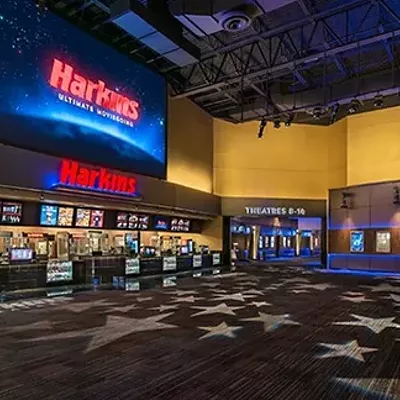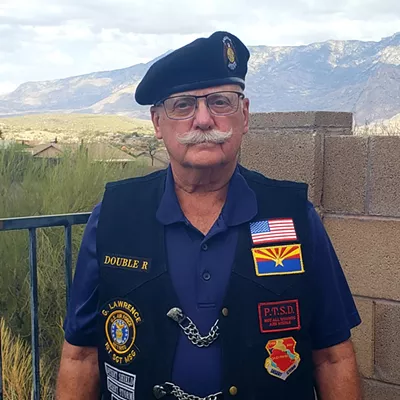There's also $130 million slated for the UA Science Center, and more than $100 million has already been spent or committed to projects such as the replica of the former Convento on the west side of the Santa Cruz River. Tens of millions more are needed for infrastructure and parking upgrades.
So is all of this affordable on a $550 million total budget, spread out over the next two decades? The answer, according to city of Tucson officials, is yes--but it depends on how and when you do the math.
"We'll have to make decisions on the (westside) museums, hotel and infrastructure in the next couple of months," observes Greg Shelko, director of the Rio Nuevo project. "We may be in a position to fund many of the things people have asked for."
Shelko says two studies, both to be completed in May, will help clarify the financial picture. The first is a report looking at how much additional tax revenue will be generated from the public and private improvements which are either planned or possible within the Rio Nuevo boundaries.
"It will add a significant amount of money," Shelko predicts.
The second report is a consultant study on downtown's infrastructure needs. Shelko believes the city's commitment to fund these costly improvements, which he hopes will soon be made by the City Council, is essential to bringing additional private-sector investment into the project.
"The private sector has been saying, 'Show us the money!' so this will instill confidence (in them)," Shelko says. "It will show Rio Nuevo isn't just focused on museums and the new arena."
But the turtle-shaped arena, new hotel and upgrades to the existing convention center are Rio Nuevo's main attractions right now. Rich Singer, the Tucson Convention Center director, foresees enormous changes when these projects are completed.
"We'll go from 150,000 to 700,000 visitors," he says, "and create bookends (with the new arena and revamped convention center)." Between them, Singer sees the potential for a small town square of stores. "This will create a very in-demand destination for shopping," he predicts.
A consistent complaint about the 12,500-seat arena proposal has been that it is too small, but Singer disputes that charge. Citing a feasibility study, he concludes: "Those who want a 20,000-seat arena want the big shows, but they're still going to go to Phoenix. Plus, nobody wants to play to a half-empty hall, so we'd only drive away smaller shows and lose dates. This (12,500 seats) is our niche, and 78 percent of acts will fit into the building, and the others wouldn't come here, anyway."
Because of technical design issues, Singer also adds: "The cost of building more than doubles when you go above 12,500 seats."
Officials hope to have the new arena open by 2010. Work would then begin on the present facility to add meeting rooms and transform the existing arena into an exhibit hall. Singer says the long-term goal is to have one convention going on while another is being set up in another space. "That will fill downtown hotels," he suggests enthusiastically.
Jim Cameron, the city's budget director, adds: "The new hotel makes this work (financially). It generates revenues for the city to help pay for the arena."
While the city has just started the paperwork to solicit proposals and select a developer to locate, build and manage the hotel--a process they hope is completed by September--both Singer and Cameron acknowledge City Hall will own the new facility and benefit from its profits.
"I know the private sector won't build it," Singer says of a developer-financed hotel. Because of the much lower interest rate on bonds the city can use to pay for the project, he adds of government-owned hotels: "This is the trend all over the nation in downtowns."
That appears to generally be the case with new convention hotels in three cities Singer mentioned. Through a quasi-public corporation, Phoenix is involved with a 1,000-room Sheraton hotel expected to open late next year on city owned land. According to those overseeing the project, the profits will be used to pay off the construction debt of the hotel.
In Austin, Texas, a quasi-public entity is also dealing with a new Hilton hotel which began business at the end of 2004. A year later, a Hyatt hotel opened near Denver's convention center, and Richard Grant, of that city's Metro Convention and Visitors Bureau, says it has been so successful that it has helped the privately owned hotels in the area.
Therefore, Singer doesn't believe existing hotels in downtown Tucson will complain about competition from a government-owned facility. Singer indicates only a fraction of the $400 million total figure to build the arena and hotel will come from Rio Nuevo funds.
"With the hotel revenue and $30 million in state funds," he insists, "it could be only one-fourth of that $400 million drawn on Rio Nuevo's money. We're not taking all of it."









